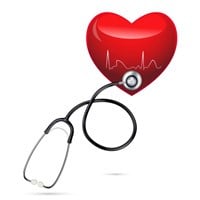Heart disease has become known as the single largest cause of mortality among woman, accounting for 25% of all female deaths worldwide.
To put the seriousness of the disease into perspective, one in four women is at risk of heart disease. That's compared with the one in 35 ratio at risk of women developing breast cancer.
Interestingly, there are 50 types of heart disease, which affect the heart and the blood vessel system within the heart.
While there are a number of factors that contribute to heart disease, including medical conditions and having a genetic predisposition to the disease, changing lifestyle is a key area in which women can make a concerted effort to reduce their risk of cardiovascular disease.
Poor lifestyle choices, such as drinking and smoking, a lack of exercise and a poor diet, exacerbate the onset of heart disease in women.
High cholesterol and high blood pressure are also contributing factors that put a woman at risk of developing heart disease.
Interestingly, depression, social isolation and a lack of quality social support can also contribute to the development of heart disease.
Due to the misconception that oestrogen helps to reduce the onset of heart disease, many people still believe that heart disease is primarily a male disease. This couldn't be further from the truth.
It was once believed that oestrogen helped to lower cholesterol levels in women, which in turn reduced the risks of heart disease. However, it has long been established that the contraceptive pill, which contains the hormone oestrogen, encourages blood clotting, and makes the body retain water which can lead to high blood pressure (hypertension).
Both these conditions will contribute to stroke, embolism, thrombosis and heart attack.
Too little oestrogen, or a lack thereof, increases the risks of heart disease in women.
When women move into the menopause, their oestrogen levels drop, making them at the age of 60 as susceptible to the disease as men are.
This fact should very effectively combat the perception that heart disease is primarily a male disease.
To be fair, the reason for many misconceptions about the disease lies in the diagnostics. The problem with diagnosing many women with heart disease is that the symptoms are not always self-evident. For many women, heart disease symptoms may be easily dismissed as simple stomach pains.
It is estimated that as much as 35% of heart attacks in women go unnoticed or unreported. This may be partly due to the fact that symptoms for women are not the classic tightness or pain in the chest.
A sign that something more serious may be wrong is if the symptoms worsen when the heart is put under pressure, for example when exercising. If this is the case, then it is important to act immediately. Medical help is most crucial in the first few hours after the attack.
Women are likely to experience a wide range of sensations. Symptoms to look out for include an uneasy feeling in the chest; abdominal pain; shortness of breath; fatigue and nausea; dizziness and even swollen feet.
The impact of poor lifestyle choices does not just lead to an increased risk of heart disease in women and men. It also results in an increased likelihood of strokes, heart attacks, tobacco- and nutrition-induced cancers, chronic bronchitis, emphysema and many others.
September is Heart Health Awareness Month, a time for all South Africans to review their lifestyles, and make the necessary adjustments to avoid heart and stroke risk. Just by exercising regularly, eating a healthy balanced diet low in saturated fats, and reducing stress, they can reduce their risk.
Source: Business Day





















